John Hurrell – 14 June, 2013
With these collections you become prone to reminiscing about photos you used to have from your own childhood or family, images that perhaps now are lost. The generic look of such images (their physical properties as artifacts linked to specific technologies - qualities such as coloration and borders) tends to be recalled before unmediated memories of the subject-matter.
Patrick Pound is a Kiwi living in Melbourne, an artist known initially for his interest in collage, painting and dismantled books. In more recent years he has been particularly focussed on photography, especially found images. His show at Melanie Roger spotlights his ongoing method of picture collecting, and subsequent recontextualising, for reproduction as groups - picking from an accumulated archive according to some principle alluded to in a final title.
Of the eight works here - each a curated mini-exhibition in itself - two use found photographs (including postcards) arranged on large pinned up paper sheets where they have been copied and positioned using Photoshop. One is the eponymous title of the show, the other featuring wind and its effects on hair, clothing, vegetation or proper names in signage. Others in this series (not here) focus on themes such as people listening to music, or reading.
The Photographer’s Shadow contains around three hundred snapshots that you can scrutinise one by one, like little square islands isolated in a sea of white. You can also think up subthemes - like couples posing with their cars or dogs - or you can make up your own narrative joining adjacent images so they fit into new localised stories. The intruding dark shadow can suggest something ominous, and in this work the images themselves come from the thirties through to the sixties.
In Portrait of the Wind the time period is bracketed differently, starting in the twenties and finishing in the forties. With these collections you become prone to reminiscing about photos you used to have from your own childhood or family, images that perhaps now are lost. The generic look of such images (their physical properties as artifacts linked to specific technologies - qualities such as coloration and borders) tends to be recalled before unmediated memories of the subject-matter.
Some other works use much smaller groupings, such as horizontal rows of seven images. One shows a group of Nazi officers, dressed in SS uniforms, Hollywood actors mixed with the genuine thing, the former with slightly better acuity. Another shows a woman in the thirties in a photobooth, dressing up in different outfits and enjoying role playing in front of the camera. Another still shows individuals in a state of mental preoccupation or reverie, and not aware of their being documented - oblivious.
Another series involves a line of 32 vertical postcards, in sequence and placed low just above the skirtingboard near the floor, going around a corner. Each card has been posted and is unique, showing an image of Seven Falls waterfall at Colorado Springs. The first card is taken at a different angle to the other 31, whilst the final version looks unnervingly like New Zealand. That curious resemblance is Pound’s point.
One other series, The Missing, shows Pound’s penchant for black humour. He presents framed up pairs of images of bathers gathered around public swimming pools, each couple seemingly identical. They are not for certain tiny details have been deleted using Photoshop. Usually these ‘removed’ or covered portions involve swimmers in the water, so the sinister implication from their disappearance (once you realise) is that they have drowned. You are forced to construct your own narrative - as if real time is involved and the images sequential. Clever and nasty.
On Roger’s Jervois Road streetfront in her large window Pound displays a single mysterious image, Crime Scene. The photo has got a blurry, smeary, even painterly quality and shows a woman from behind, in what could be a backless dress, apparently lying facedown on the ground. The misshapen dress might also be the back of a chair, and an adjacent rectangular towel makes the whole image spatially confusing. Is she horizontal and inert, in the process of falling, or just doubled up and possibly laughing or drunk? It is very ambiguous and disturbing beautiful.
Pound reminds me of the great British collagist John Stezaker who also uses a large photographic archive, and postcards, but to explore the uncanny in portraiture by careful juxtaposition, and - via pairs of heads - manipulation of edge to blend forms. Pound’s sensibility is very different, examining and discovering through prolonged accumulation, obsessive but focussed hoarding - and then, precise choosing at the end. Wonderful work.
John Hurrell
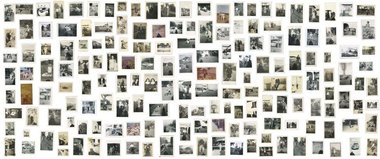
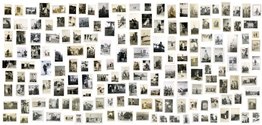

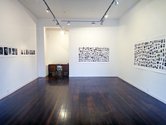

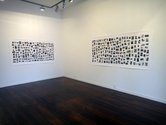
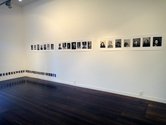



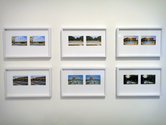
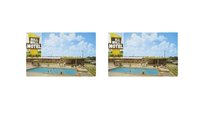
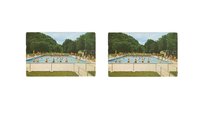
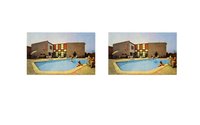
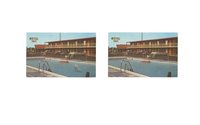
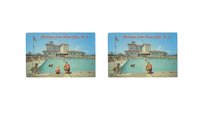
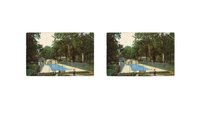
 Two Rooms presents a program of residencies and projects
Two Rooms presents a program of residencies and projects Advertising in this column
Advertising in this column



This Discussion has 0 comments.
Comment
Participate
Register to Participate.
Sign in
Sign in to an existing account.